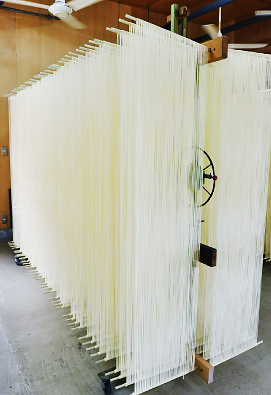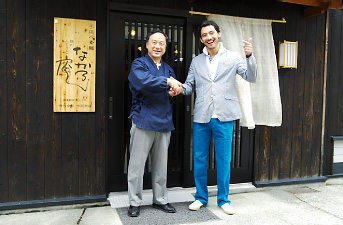| One of the unique features of Shodoshima somen is the use of sesame oil to coat the noodles during the stretching process. This prevents the strands from sticking together or drying out too soon. “Sesame oil not only has a nice flavor but is also very resistant to oxidation. That preserves the flavor and quality of the somen.” Apparently, Shodoshima is the nation’s number one producer of sesame oil. This island really is blessed with food! |
|
I tried separating the strands with chopsticks, one of the final processes that stretches the noodles to the right thinness and prepares them for drying. After gently inserting a long pair of chopsticks between the strands, which are crossed and stuck together, you have to slide them firmly from side to side. This loosens up the strands and makes them extremely thin. It’s really quite fun! |
|
“Speed is important for this job,” Mr. Nakabu tells me. “If you take too long, the dough becomes dry and hard and doesn’t stretch.” I speed up a little. “That’s good. You’ve got the rhythm now.” As I continue, I’m thinking that I’ll put this up on Twitter! The separated somen is dried for about half a day in the sun. These curtains of thin white somen swaying in the breeze fit this tranquil island setting perfectly. |

